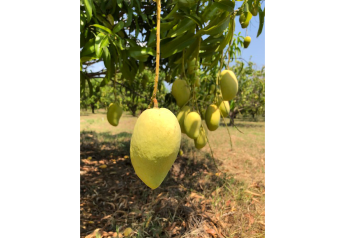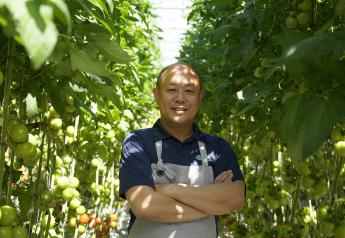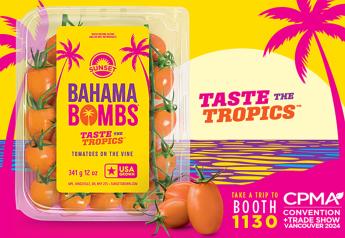Central America’s produce deal (mostly) pulls through hurricanes
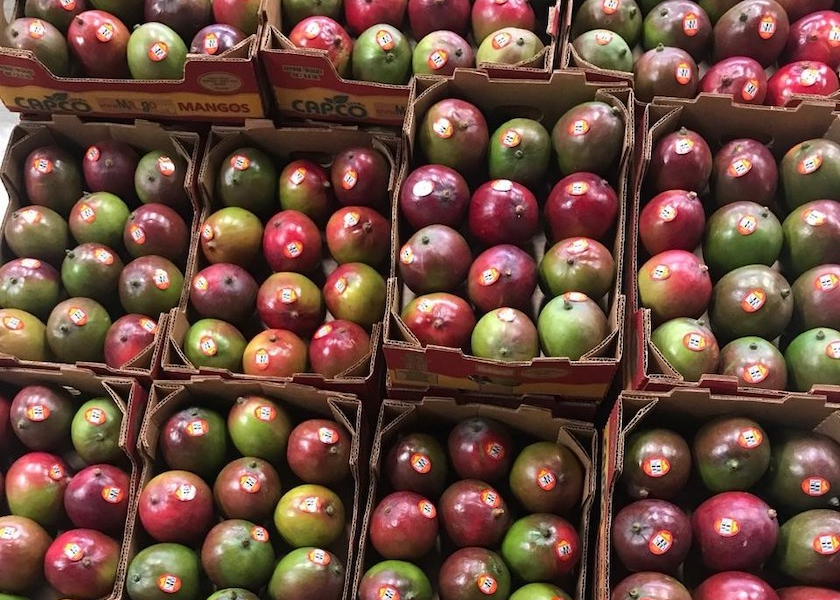
Multiple hurricanes damaged some Central American crops but left others unscathed as the 2021 U.S. export season kicks into high gear.
“Like everybody in Central America, we received a double whammy,” said Charlie Eagle, vice president of business development for Pompano Beach, Fla.-based Southern Specialties.
Hurricane Eta damaged fields and caused landslides, and then barely two weeks later, Iota downgraded from a tropical storm but dumped a lot of rain on areas already reeling from the prior storm.
The result was a lot of damaged infrastructure, including roads and bridges, that affect getting crops to harbors for shipping.
“We were able to mitigate some of our losses by preparing with draining and building berms. I’d say we lost about 20% of our crops overall, and at least as important was our transportation. Ships weren’t able to leave ports in a timely manner, and that affected our arrivals for Thanksgiving,” Eagle said.
He expects lower supplies for about the first four to six weeks of 2021.
“But we think we’ll be in pretty good shape longterm. Our team is really good at communicating those things.”
The company recently celebrated 30 years of business. It grows and imports vegetables from Guatemala, some for its value-added brand, Southern Selects, including: baby squash, baby carrots, French beans, snow peas, sugar snap peas, Brussels sprouts, radicchio and baby broccoli. A bit of their fruit comes from Guatemala too.
As a delicate fruit, papaya wasn’t unscathed either, said Peter M. Leifermann, vice president of sales and marketing at Brooks Tropicals, Homestead, Fla.
“The Guatemalan papaya season is year-round, but this year, hurricanes — from Cristobal to Eta — affected the growing region and ship logistics,” Leifermann said.
Even so, Brooks Tropicals expects a similar volume for 2021 as in 2020, if not slightly more, he said.
Brooks Tropicals distributes Guatemalan Tainung papayas trademarked under the brand, Caribbean Red Papaya.
Tamarac, Fla.-based Quince Supermarket produce manager Stiven Zapata sources most products from Costa Rica out of all Central American countries, followed by Guatemala and Honduras, he said. Zapata uses Nicaragua and Panama produce to fill the gaps between seasons in the other countries.
His Costa Rican bestsellers are pineapples, white yams (also known as ñame) and calabaza. From Guatemala, yellow papaya, green plantains and snow peas do the best.
“Due to its flavor and longevity, papaya from Guatemala is one of the bestsellers for the produce department,” Zapata said.
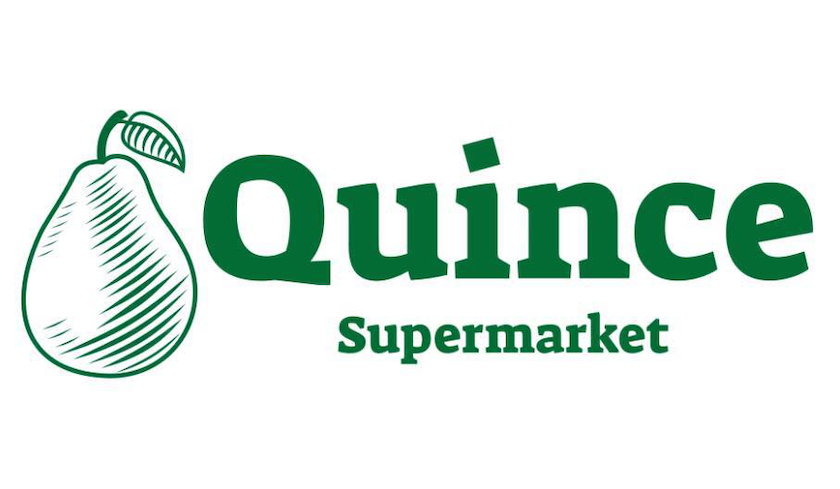
Central American Produce Co., Pompano Beach, Fla., expects maybe as much as a third less volume of its early crop of watermelon, cantaloupe and honeydew from Guatemala as predicted because of the rainstorms, although reports vary, said Michael Warren, president.
Warren expected to receive his first shipments of Guatemalan melons the second week of December.
Overall, the melon deal should be comparable to last year, he said.
Melons from Honduras should arrive in January as expected and butternut squash by end of December. Central American Produce is starting to source Honduran limes to fill a gap when Mexican lime supply dips in January-February.
Arriving since early December, Honduran okra is slightly affected from the rains but is still in good condition, Warren said.
“There’s maybe a little less product available and delays in planting, but really the effects were minimal,” he said.
Guatemalan mango trees were just starting to flower when the storms came, and they should be ready for shipping about the end of March.
“So, there’s a long way to go,” he said. “Everything is pretty much on track and normal for us, compared to last year.”
Warren’s company is increasing its mango volumes every year, and he expects that trend to continue. He’s also redesigning the mango box dimensions to carry the same weight but be more efficient for cooling and ripening — a service his company is doing more of lately.
In comparing the year-end 2019 rankings to the mid-year 2020 rankings, mangoes rose from No. 20 to No. 17 in dollars per store per week in the Nielsen fruit rankings for the period ending June 27, 2020, according to the National Mango Board.
However, mango volumes from Central America are expected to be a bit lower in 2021 than normal, said Manuel Michel, board executive director.
According to the U.S. Department of Agriculture’s Foreign Agriculture Services:
- Guatemala’s 2.2 million boxes of mangoes per year is down from the usual 3-4 million boxes per year;
- Nicaragua’s 250,000 boxes is down from almost 1 million; and
- Costa Rica’s 300,000 boxes is down from about 500,000 boxes.
COVID-19 effect
When the pandemic first hit in March, it had a big effect on labor and harvesting with all the restrictions and new procedures needed, Michel and Warren said. But now the food and worker safety and health systems are in place.
Early on there were shipment delays due to the pandemic, but as of early December and starting with the new season, it’ll be smoother, Michel said.
Before, Guatemala was in the middle of season and had to adjust to protect its workforce, and the rest of the region’s countries followed suit after that, so volume of mangoes actually increased, he said.
“By end of the year, I’ll think we’ll have a record year for volume of mangoes consumed in U.S., all mangoes produced and exported to U.S.,” Michel said. “They were lucky that these hurricanes didn’t hurt the mango crop.”
The pandemic has not had the same effect on labor availability as it has at some U.S. farms, due to the remote location of the papaya fields in Guatemala, Leifermann said.
Social distancing and sanitizing protocols slowed some production and packing, but Eagle also said they’ve had time to communicate with customers and reconfigure procedures since the pandemic’s first months were in high season in Guatemala.
“We’re living in a COVID world, and we’re adjusting to it,” Eagle said. “We are starting to see light at the end of the tunnel, and we have a positive view for the future.”
Central American import values
Costa Rica and Guatemala are, by far, the biggest fruit and vegetable exporters to the U.S., according to the U.S. Census Bureau’s foreign trade statistics. The data details the value of U.S. imports from Central American countries, listed north to south, between 2010 and 2019:
- Guatemala: The annual value of U.S. fresh fruit and frozen juice imports rose from $595.7 million in 2010 to $1.2 billion in 2019; As for vegetables, it went from $108 million to $233.4 million;
- Honduras: In that time frame, from Honduras, the fruit and juice import value rose from $229.9 million to $409.6 million and for vegetables, from $36.6 million to $85 million;
- Nicaragua: However, fruit and juice imports dropped from $19 million to $13.6 million the last 10 years, with the sharpest decrease happening between 2018 and 2019; but the vegetable imports value rose from $18.9 million to $37.6 million;
- Costa Rica: Fruits and juice import value rose from $898.1 million to $1.1 billion and for vegetables, import value rose from $82.1 million to $114.3 million; and
- Panama: Fruit and juice import value declined from $21 million to $8.3 million, the sharpest drop between 2012 and 2013; and for vegetables, value dropped from $2.4 million to $1.1 million, the sharpest drop between 2016 and 2017.


